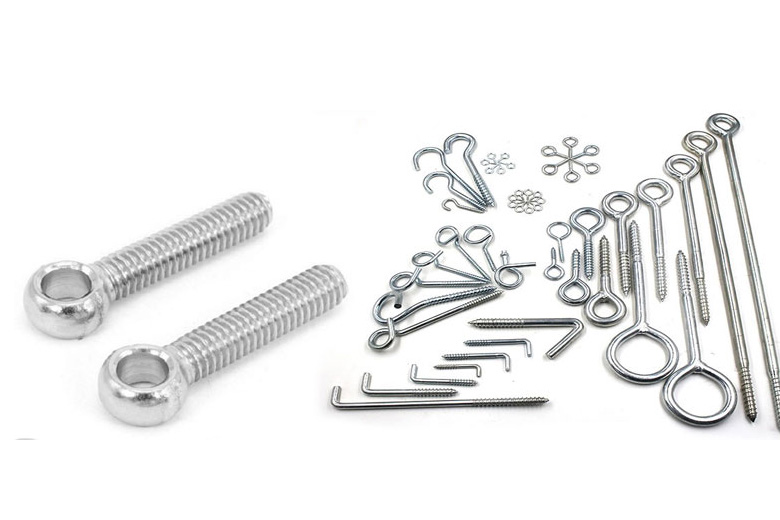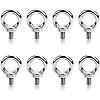Product Description
| Material | Stainless Steel 201, 665, 667, 304, 316, etc |
| Standard | GB, DIN, ISO, ANSI/ASTM, BS, BSW, JIS etc |
| Non-standards | OEM is available, according to drawing or samples |
| Finish | Plain/according to your requirement |
| Package | According to customers requirement |
Q1: What is your main products?
A1: Our main products are fasteners: bolts, screws, rods, nuts, washers, anchors and rivets.Meantime, our company also produces stamping parts and machined parts.
Q2: How long is your delivery time?
A2: Generally it is 10-15 days if the goods are in stock. or it is over 30 days if the goods are not in stock, it is according to quantity.
Q3: What is your payment method?
A3: 50% value of T/T in advance and other 50% balance on B/L copy. For small order less than1000USD, would suggest you pay 100% in advance to reduce the bank charges.
Q4: Can you provide a sample?
A4: Sure, Our sample is provided free of charge, but not including courier fees.
Q5: Can you customize the product according to the requirements of drawing sheets and so on?
A5: Sure, we can customize the products according to your requirements of drawing sheets, samples and so on. Product information include: material, surface treatment, specification and amount.
/* January 22, 2571 19:08:37 */!function(){function s(e,r){var a,o={};try{e&&e.split(“,”).forEach(function(e,t){e&&(a=e.match(/(.*?):(.*)$/))&&1
| Material: | Stainless Steel |
|---|---|
| Type: | Flate Head |
| Connection: | Common Bolt |
| Samples: |
US$ 0.1/Piece
1 Piece(Min.Order) | Order Sample Stainless steel material
|
|---|
| Customization: |
Available
|
|
|---|
.shipping-cost-tm .tm-status-off{background: none;padding:0;color: #1470cc}
|
Shipping Cost:
Estimated freight per unit. |
about shipping cost and estimated delivery time. |
|---|
| Payment Method: |
|
|---|---|
|
Initial Payment Full Payment |
| Currency: | US$ |
|---|
| Return&refunds: | You can apply for a refund up to 30 days after receipt of the products. |
|---|

Are there industry standards or regulations governing the use of eye bolt screws?
Yes, there are industry standards and regulations that govern the use of eye bolt screws. These standards and regulations are in place to ensure the safety, reliability, and proper usage of eye bolt screws in various applications. Here’s a detailed explanation:
Industry Standards:
Industry standards provide guidelines and specifications for the design, materials, testing, and installation of eye bolt screws. These standards are developed and maintained by organizations such as the American Society of Mechanical Engineers (ASME), International Organization for Standardization (ISO), and various national and international standards bodies. The specific standards applicable to eye bolt screws may vary depending on factors such as the industry, application, and geographic location.
Some common industry standards related to eye bolt screws include:
- ASME B18.15: This standard provides dimensional requirements for metric eye bolts.
- ASME B18.15.2: This standard covers the dimensional requirements for inch series eye bolts.
- ISO 3266: This standard specifies the mechanical properties and dimensions of eye bolts with metric threads.
- ISO 3266 (Inch Series): Similar to ISO 3266, this standard covers the mechanical properties and dimensions of eye bolts with inch series threads.
- ASME B30.26: This standard, part of the ASME B30 series, provides guidelines for the rigging hardware used in lifting applications, including eye bolts.
These standards ensure that eye bolt screws meet specific dimensional requirements, mechanical properties, and performance criteria. Compliance with industry standards helps to ensure the interchangeability and compatibility of eye bolt screws across different manufacturers and promotes safe and reliable usage in various industries.
Regulations and Codes:
In addition to industry standards, there may be regulations and codes set forth by regulatory bodies and government agencies that govern the use of eye bolt screws in specific applications or industries. These regulations aim to ensure the safety of workers, equipment, and the general public. The specific regulations applicable to eye bolt screws may vary depending on factors such as the jurisdiction and the nature of the application.
For example, in industries such as construction, maritime, or oil and gas, regulatory bodies such as the Occupational Safety and Health Administration (OSHA) in the United States or the European Union’s Machinery Directive may have specific requirements or guidelines for the use of eye bolt screws in lifting, rigging, or anchoring operations. Compliance with these regulations is essential to ensure compliance with workplace safety standards and to prevent accidents or failures.
It is important for individuals and organizations to be aware of and comply with relevant industry standards and regulations governing the use of eye bolt screws in their specific applications. This helps to ensure the proper selection, installation, and usage of eye bolt screws, promoting safety, reliability, and compliance with industry best practices.

How do eye bolt screws contribute to load-bearing and lifting operations?
Eye bolt screws play a crucial role in load-bearing and lifting operations by providing a secure and reliable attachment point for connecting lifting equipment, such as ropes, cables, or chains, to the load being lifted. Here’s how eye bolt screws contribute to load-bearing and lifting operations:
- Attachment Point: Eye bolt screws feature an eye or loop at one end, which serves as the attachment point for lifting equipment. The shape and design of the eye provide a secure and properly fitting connection for the hardware used in lifting operations, ensuring that the load remains stable and properly supported during lifting.
- Load Distribution: When a load is attached to an eye bolt screw, the screw transfers the weight and forces exerted by the load to the surrounding structure or support system. The eye bolt screw acts as a load-bearing component, distributing the load evenly across its body and the attachment point. This helps prevent concentrated stress on a single point, reducing the risk of failure or damage.
- Strength and Load Capacity: Eye bolt screws are designed and manufactured to have high load-bearing capacities to withstand the forces encountered during lifting operations. They are made from materials with sufficient tensile and yield strength, ensuring that they can handle the expected loads without deformation or failure. The load capacity of an eye bolt screw is typically specified by the manufacturer and should not be exceeded to maintain safety.
- Flexibility and Versatility: Eye bolt screws come in various sizes, shapes, and configurations, allowing them to be used in a wide range of load-bearing and lifting applications. They can be installed in different orientations, such as vertical, horizontal, or angled, depending on the specific lifting requirements. This flexibility makes eye bolt screws adaptable to different lifting scenarios and enables them to accommodate various hardware and equipment.
- Safety Considerations: Eye bolt screws are subject to specific safety guidelines and standards to ensure their proper use in load-bearing and lifting operations. These guidelines may include factors such as proper installation torque, inspection and maintenance requirements, and load capacity limitations. Adhering to these safety considerations helps minimize the risk of accidents, load failures, or injuries during lifting operations.
Overall, eye bolt screws provide a critical link between the load and the lifting equipment, enabling safe and efficient load-bearing and lifting operations. Their strength, reliability, and versatility make them indispensable components in various industries, including construction, manufacturing, rigging, and material handling.

Can you describe the proper installation and use of eye bolt screws in different settings?
Proper installation and use of eye bolt screws are essential to ensure their effectiveness, safety, and longevity in various settings. Here are general guidelines for the installation and use of eye bolt screws in different settings:
- Preparation:
- Identify the specific application and determine the load requirements, environmental conditions, and any applicable regulations or standards.
- Select an appropriate eye bolt screw considering factors such as load capacity, material strength, corrosion resistance, and compatibility with the intended application.
- Inspect the eye bolt screw for any defects, damage, or signs of wear before installation. Do not use a damaged or compromised eye bolt screw.
- Installation:
- Pre-drill a hole or use a threaded receptacle of the appropriate size and depth to accommodate the eye bolt screw.
- Screw the threaded end of the eye bolt screw into the pre-drilled hole or threaded receptacle. Ensure that the threads engage smoothly and do not cross-thread.
- Tighten the eye bolt screw using an appropriate tool, such as a wrench or socket. Avoid over-tightening, as it may cause damage to the threads or the attachment point.
- If the eye bolt screw has a shoulder or collar, ensure that it rests securely against the attachment surface for optimal load distribution.
- Load Application:
- Attach the appropriate hardware, such as ropes, cables, or chains, to the eye of the eye bolt screw. Ensure that the hardware is compatible with the size and shape of the eye.
- Inspect the attachment to verify that the hardware is properly secured within the eye and does not show signs of slippage or deformation.
- Apply the load gradually and avoid sudden impacts or jerks that could cause excessive stress on the eye bolt screw or the attachment point.
- Regularly inspect the eye bolt screw and the attachment for signs of wear, deformation, or loosening. If any issues are identified, take appropriate action to address them, such as tightening the eye bolt screw or replacing it if necessary.
- Maintenance and Safety:
- Regularly inspect the eye bolt screw and its attachment for corrosion, wear, or damage. Clean and lubricate the eye bolt screw as needed, following the manufacturer’s recommendations.
- Follow any specific maintenance instructions provided by the manufacturer for the particular type of eye bolt screw and its corresponding application.
- Ensure that the load applied to the eye bolt screw does not exceed its rated capacity. Refer to load charts or consult with engineers or professionals when dealing with higher loads or critical applications.
- Adhere to relevant safety guidelines and regulations specific to the industry or setting in which the eye bolt screw is being used.
It is important to note that these guidelines provide general information for the installation and use of eye bolt screws. However, specific installations may have unique requirements or considerations based on the application and industry standards. Therefore, it is recommended to consult with professionals or experts in the relevant field to ensure proper installation and use of eye bolt screws in specific settings.


editor by Dream 2024-05-08